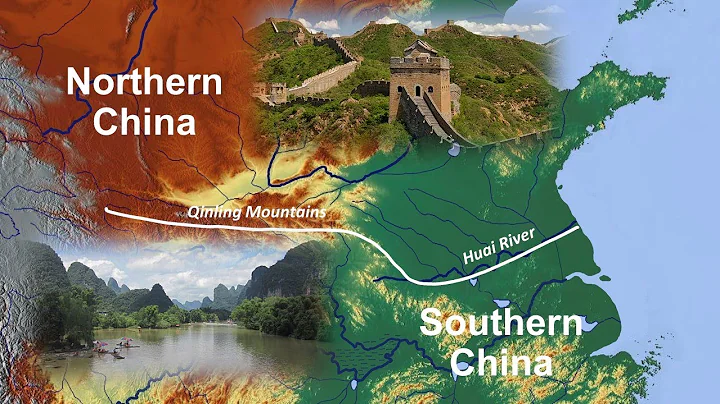
Bianliang There are four rivers in the city. These four rivers have one thing in common, that is, they are not natural rivers, but artificially dug.
As mentioned before, the Bianhe River was originally part of the Grand Canal and belonged to the Tongji Canal.
Going back further, when Emperor Yang of the Sui Dynasty excavated the Grand Canal, he did not build it from the beginning to the end, covering more than a thousand kilometers. In fact, he borrowed many places in the middle from other rivers. For example, the Grand Canal near Yangzhou was actually the Han ditch dug by King Wu Fucha in the Spring and Autumn Period of China.

Many canals were excavated in subsequent dynasties. Emperor Yang of the Sui Dynasty mainly connected these canals and some natural rivers together to form the Grand Canal of the Sui Dynasty.
The Bian River was not dug by Emperor Yang of the Sui Dynasty, but existed before the Sui Dynasty. It was only later expanded during the reign of Emperor Yang of the Sui Dynasty and became part of the Tongji Canal.
According to " Tokyo Menghualu ", the Bianhe River "divides water from Luokou, Xijing, into the capital, goes east to Sizhou, and enters Huaihe River", which means that the water of the Bianhe River comes from Luoyang. This is considered the source of the Bian River.
This was the situation in the Song Dynasty. In fact, the course of the Bianhe River has undergone changes. The places where it starts and ends has changed, and its name has also changed. Roughly during the late Han, Wei and Jin Dynasties, it was called Bianshui . What was it called before, it was called Honggou.

Does this name sound familiar? Yes, this is the boundary that was set at the end of Qin Dynasty when Liu Bang Xiang Yu was fighting for the world. You can also often see it when playing Chinese chess, with a chasm written in the middle, which serves as the boundary between the red and black sides.
Today we went to see the remains of the so-called chasm, which is a ravine with hills on both sides and a flat land in the middle. It is a ravine, but when Chu and Han fought , it was really a river, so it became the agreement between Chu and Han. boundary.
However, even if it is not a ditch but a river, it is of no use. The treaty was worthless at all. If Xiang Yu withdrew his troops, Liu Bang would break the treaty and cross the chasm to pursue Xiang Yu. In the end, Xiang Yu was defeated, ambushed from all sides, and died on the shore of the Wujiang River. But the name of Chasm has remained, and it has become a word we use to describe some boundaries today, and it will remain on the Chinese chess board forever.

But the Chasm is not a natural river. It was first built as an artificial canal by the Warring States Period Wei State. During the Warring States Period Qin and Han Dynasties, this canal was also a golden waterway, and many things were transported through this river.
It is this gap. Later, it was repaired and rerouted, and part of it became the Bianhe River in the Song Dynasty.
As for the Cai River, the source of the Cai River is actually the Bian River. It diverts water from the Bian River. A waterway is opened upstream of the Bian River, which is like a switch on a train track, guiding the water in another direction. .

Wuzhang River, this river itself is diverted from Bianshui River, and then flows into Bianliang City from the north of Bianliang.
Why do you do this? Or for the convenience of transportation. Multiple rivers mean multiple transportation roads.
Jinshui River is also an artificial river. It is formed by diverting water from two rivers, Jingshui and Suoshui, and flows into Bianliang.
During the Northern Song Dynasty, a water tank was built in Bianliang City to divert water from Jinshui River to Wuzhang River.

In fact, one of the purposes of dredging the Jinshui River in the Song Dynasty was to provide water to the Wuzhang River, because when we heard the name of the Wuzhang River, Wuzhang, one foot in the Song Dynasty was slightly shorter than today's one foot, but it was probably also It is more than three meters, five feet, or fifteen meters wide. When you think about it, you will know that the river is not very wide and has a small amount of water. After all, it is diverted from the Bian River.
It should be said that considering the historical conditions at that time, setting up a water tank to divert water in the city was a very huge project. When we go to Italy today, we can still see the elevated drinking water bridge built during the and Roman periods to provide water to Rome, but we can no longer see the drinking water trough in Bianliang.
These four rivers were known as the "Four Water Canals" in the Northern Song Dynasty. They were crucial to the lives of residents in Bianliang, a big city. However, these four rivers all faced a big problem. What is it? I will talk about it in the next issue.





















